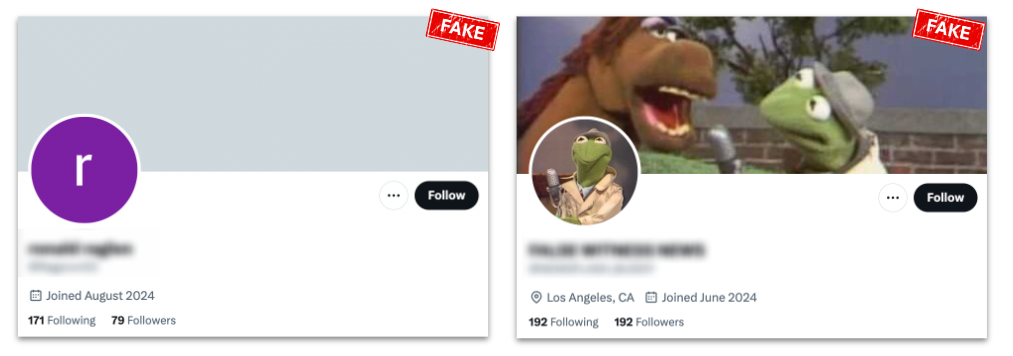As the US presidential elections enter its final stage, Cyabra is closely monitoring all major social media platforms to uncover disinformation, bot networks, fake campaigns, conspiracy theories, and other social engineering attacks. We will keep you updated on anything we uncover to help expose and counter attempts to manipulate online discourse.
Here’s a run-down of disinformation and conspiracy theories uncovered by Cyabra around the presidential debate:
Disinformation Tactics:
- 18% of all debate-related conversations on X were driven by fake accounts, generating over 30,000 engagements and reaching an estimated 57 million potential views.
- Many of these fake profiles were created in recent months, strategically placed to manipulate election-related discourse.
- The fake accounts used AI-generated content and images to spread their messages.
- The fake profiles used the hashtags #debate2024 and #presidentialdebate2024 to maximize their visibility.
Read Cyabra’s analysis on Forbes

Disinformation Narratives:
Before the debate:
- In the weeks leading up to the debate, a dominant narrative emerged accusing one of ABC’s debate hosts, David Muir, of bias toward Harris. This narrative laid the groundwork for the later claim that the debate questions had been leaked to her.
Read Cyabra’s analysis on Gzero
During and after the debate:
- Two false narratives accused Harris of cheating: The first claimed that ABC leaked the debate questions to Harris, and the second alleged that Harris wore earrings that were actually earpieces, feeding her answers from her advisors.

- Another false claim revolved around Trump’s accusation that Haitian immigrants were stealing and eating pets in Springfield, Ohio. While this conspiracy theory spread, a counter-campaign mocking it surfaced, sharing GenAI images of Trump rescuing cats. Although the campaign was satirical and not intended to appear authentic, it ironically contributed to the spread of the original false narrative.

- A fake news campaign falsely claimed that Harris was involved in a hit-and-run car accident, where she allegedly crashed into a 13-year-old girl and fled the scene. This narrative, previously debunked, went viral again largely due to fake profiles spreading it. The disinformation was amplified by the fake news site “KBSF-TV,” which is suspected to have been created by foreign state actors.
Defending Election Discourse is More Crucial Than Ever
Democracies and government organizations must be aware of the growing impact fake profiles have on our society and our votes.
Learn more about Cyabra’s OSINT capabilities in monitoring elections discourse online and identifying fake campaigns and bot networks.


